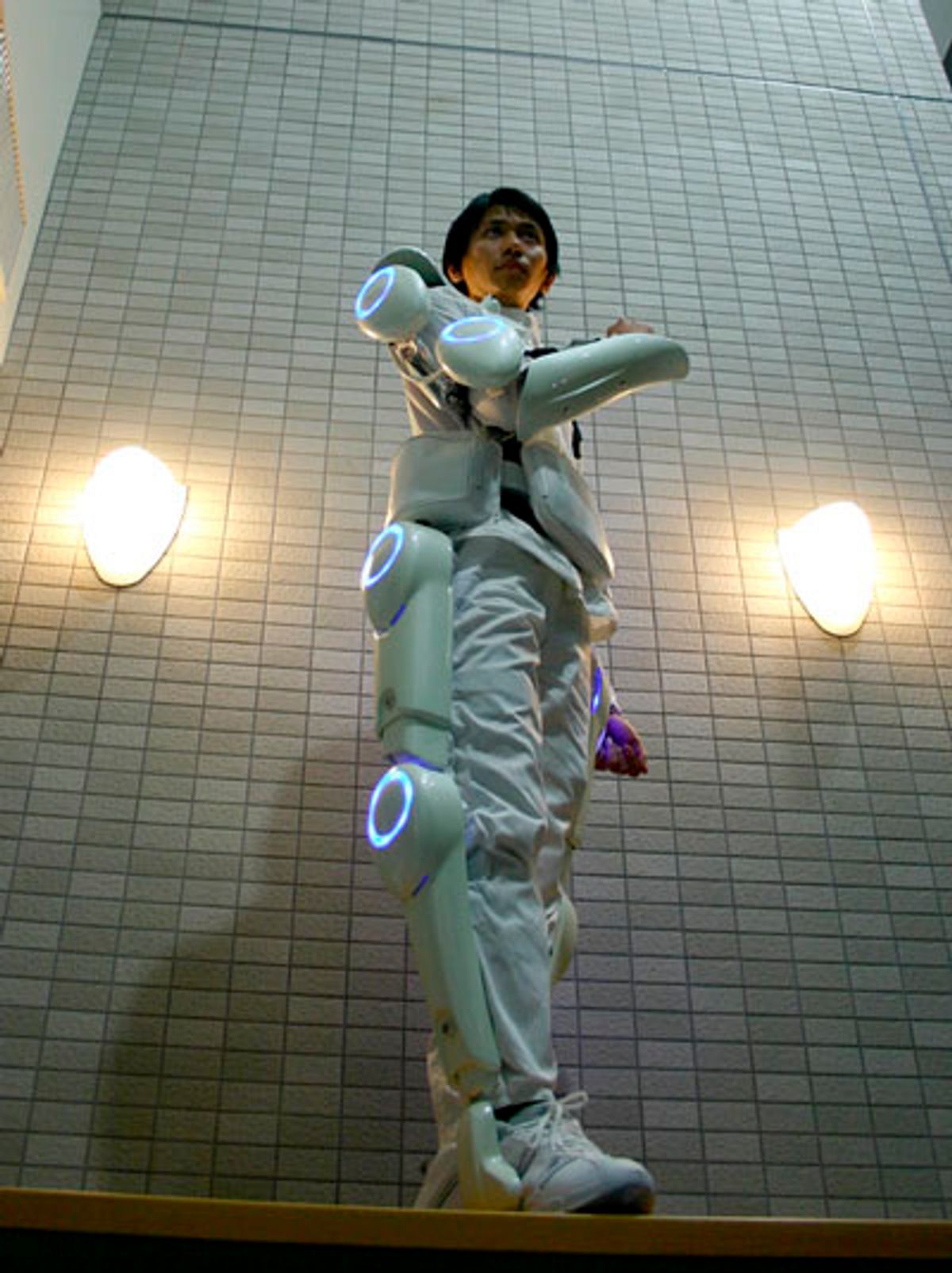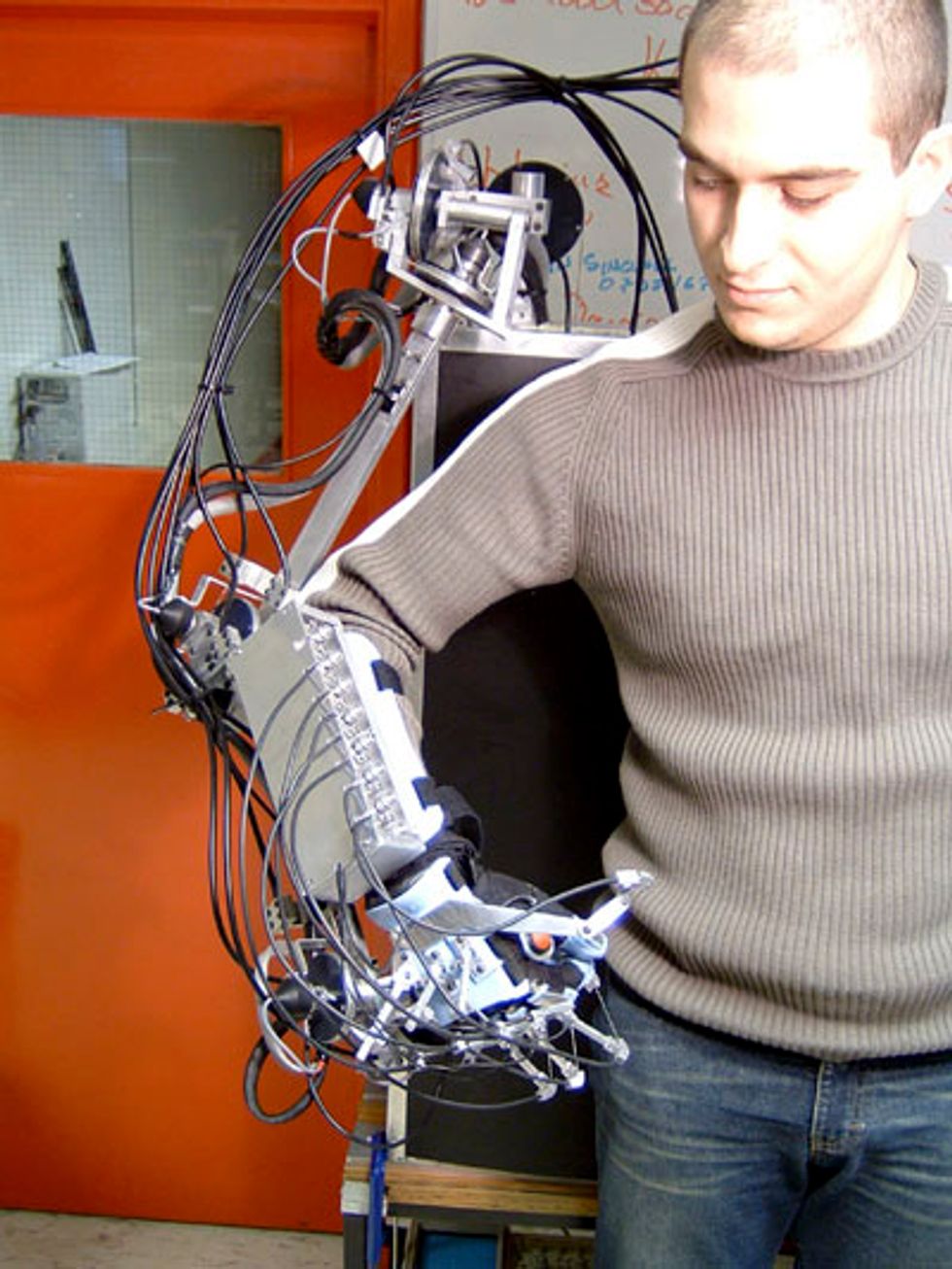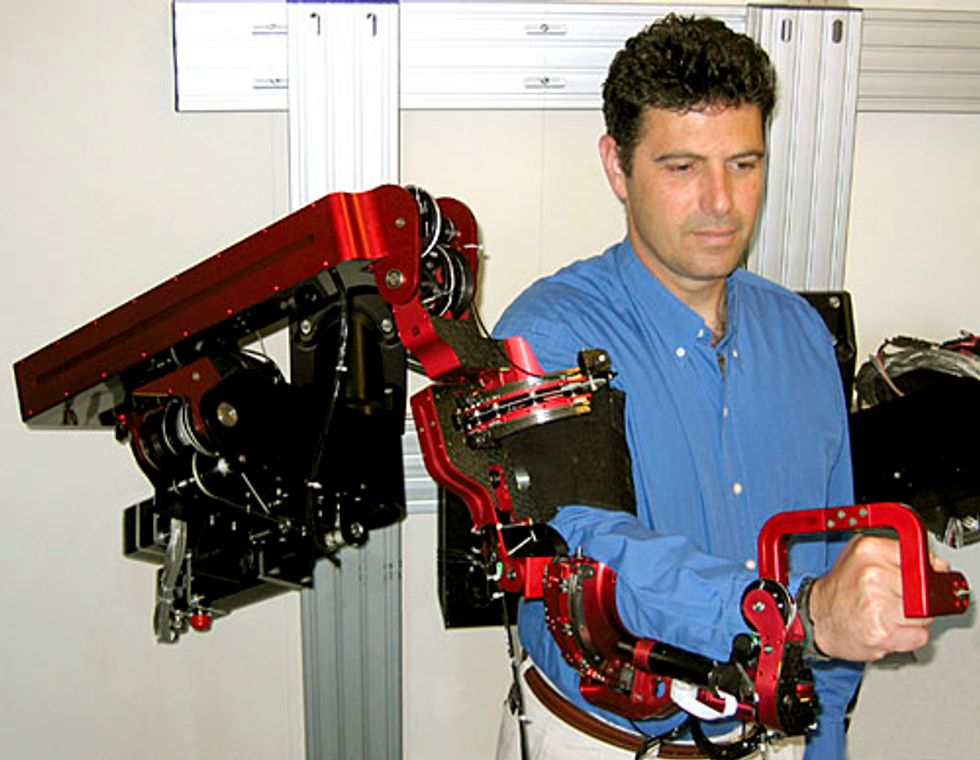BIONIC BODY: HAL-5, developed at the University of Tsukuba, Japan, is a powered robotic suit that can help elderly and disabled people walk and carry things.
Photo: University of Tsukuba
MASTER CONTROL: Researchers at the Korea Institute of Science and Technology, in Seoul, created an exoskeleton master arm that can control a humanoid robot's arms.
Photo: Korea Institute of Science and Technology
HAND EXERCISER: An arm exoskeleton developed by a group at the University of Salford, in Manchester, England, helps users in rehabilitation exercises.
Photo: University of Salford
AIR POWER: A pneumatic exoskeleton developed at the Kanagawa Institute of Technology, in Atsugi, Japan, allows Akiko Michihisa, a fitness trainer, to hold a 20-kilogram barbell without getting tired.
Photo: Kanagawa Institute of Technology
VIRTUAL TOUCH: L-EXOS, developed at the Scuola Superiore Sant'Anna, in Pisa, Italy, is an arm and hand exoskeleton that can be used for human interaction with virtual environments.
Photo: Scuola Superiore Sant'Anna
METAL MUSCLES: Carlos Owens of Wasilla, Alaska, built Mecha, a 5.5-meter-tall, 1360-kilogram exoskeleton, in his backyard with US $25 000 of his own money.
Photo: Carlos Owens
FULL-ARM EXO: Jacob Rosen, a professor at the University of Washington, in Seattle, demonstrates a full-arm exoskeleton designed to help people suffering from various neurological disabilities.
Photo: University of Washington
ROBOTIC MOTION: A group at Saga University, in Saga City, Japan, developed an upper-limb exoskeleton that translates neuromuscular signals into robotic motion.
Photo: Saga University
Photo: Sarcos Research Corp.









